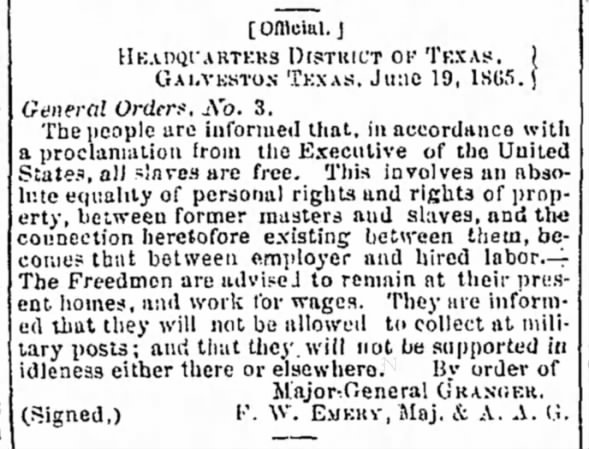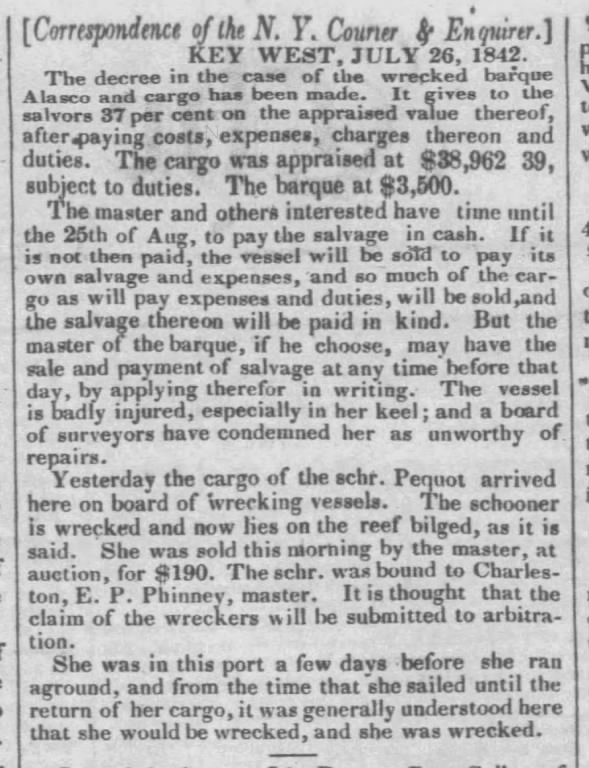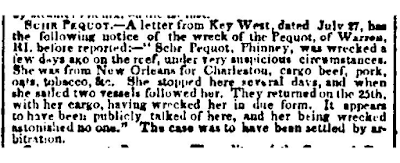Friday, June 19, 2020
Lincoln's solemn vow
 |
| The first reading of the Emancipation Proclamation before the cabinet Painted by F.B. Carpenter / engraved by A.H. Ritchie via Library of Congress |
As reported by Francis Bicknell Carpenter in The Independent and widely reprinted by American newspapers in June 1865:
... Mr. Chase told me that, at the Cabinet meeting immediately after the battle of Antietam, and just prior to the issue of the September proclamation, the President entered upon the business before them, by saying that "the time for the annunciation of the emancipation policy could no longer be delayed. Public sentiment," he thought, "would sustain it, many of his warmest friends and supporters demanded it; and he had promised his God that he would do it!" The last part of this was uttered in a low tone, and appeared to be heard by no one but Secretary Chase, who was sitting near him. He asked the President if he correctly understood him. Mr. Lincoln replied: "I made a solemn vow before God that, if General Lee was driven back from Pennsylvania, I would crown the result by the declaration of freedom to the slaves!"
--Albany Evening Journal (Albany, New York) June 17, 1865This account also appears on pages 89-90 in F. B. Carpenter, Six Months at the White House (New York, 1866).
 |
| President A. Lincoln / Reading the Bible to his son via Library of Congress |
 Wed, Jun 21, 1865 – Page 1 · The Galveston Daily News (Galveston, Texas) · Newspapers.com
Wed, Jun 21, 1865 – Page 1 · The Galveston Daily News (Galveston, Texas) · Newspapers.com
[Official.]HEADQUARTERS DISTRICT OF TEXAS,GALVESTON TEXAS, June 19, 1865.General Orders, No. 3The people are informed that, in accordance with a proclamation from the Executive of the United States, all slaves are free. This involves an absolute equality of personal rights and rights of property, between former masters and slaves, and the connection heretofore existing between them, becomes that between employer and hired labor.-- The Freedmen are advised to remain at their present homes, and work for wages. They are informed that they will not be allowed to collect at military posts; and that they will not be supported in idleness either there or elsewhere.
By order ofMajor-General GRANGER,(Signed,) F. W. EMERY, Maj. & A. A. G.
Related post:--Galveston Daily News, June 21, 1865
- Lincoln's lost words
https://melvilliana.blogspot.com/2017/08/lincolns-lost-words-slavery-is-sin.html
Saturday, June 13, 2020
Elizabeth S Melville, Happy 198th Birthday
Today is the birthday of Herman Melville's wife Elizabeth S. Melville aka Lizzie, born Elizabeth Knapp Shaw in Boston on June 13, 1822. Herman married the daughter of Lemuel Shaw on August 4, 1847. From "Boston As It Is" by "Falconbridge," Correspondence of the Philadelphia Saturday Courier, August 14, 1847:
 |
| Philadelphia Saturday Courier - August 14, 1847 via GenealogyBank |
Herman Melville, the renowned author of those two lucky books, Typee and Omoo, was last week united to the daughter of old Chief Justice Shaw, of this city. That, I guess, will stop his whaling business and revels with the nymphs of the South Sea.... FALCONBRIDGE.Falconbridge was a pseudonym of journalist Jonathan Falconbridge Kelly (1817-1855).
Here's a link to my 2009 letter in Leviathan on the significance of the melting mood in Melville's prose dedication "To Winnefred," usually read as addressing his wife.
Melville’s use of the melting mood offers no grounds for presumptively and exceptionally characterizing Melville’s wife as “imperceptive” of literary irony, and no grounds for excluding her from the class of “alert” readers…. Given her long experience with Melville’s development as poet, including her vital role in the collaborative effort (a failure, ultimately) in 1860 to publish “Poems by Herman Melville,” Elizabeth is unlikely to have misperceived Herman’s use of stock literary devices such as verbal or situational irony and metaphors of human mortality.Footnote 4 cites Laurie Robertson-Lorant on the formal education of Elizabeth Shaw Melville in Melville and Women, edited by Elizabeth Schultz and Haskell Springer (Kent State University Press, 2006).
Thinking of Winnie-Lizzie as dedicatee reminds me that Hershel Parker gives her the last word in Herman Melville: A Biography Volume 2, 1851-1891 (Johns Hopkins University Press, 2002; paperback 2005).
Winnefred does not figure in "Copyright, 1892, by Elizabeth S. Melville": Rethinking the Field Formation of Melville Studies, the March 2019 Leviathan essay where Adam Fales and Jordan Alexander Stein offer a "wife-centric" model of authorship that pays welcome attention to Elizabeth's agency in securing the 1892 republication of Typee. And, more generally, in promoting her husband's literary legacy.
For further study of "To Winnefred", digital images from the manuscript of Weeds and Wildings are accessible via Houghton Library, Harvard University:
- Persistent Link https://nrs.harvard.edu/urn-3:FHCL.HOUGH:16083258?n=151
- Description Melville, Herman, 1819-1891. Unpublished poems : autograph manuscript, undated. Herman Melville papers, 1761-1964. MS Am 188 (369.1). Houghton Library, Harvard University, Cambridge, Mass. Folder 5. Weeds & wildings with a rose or two.
- Page sheet 4 (seq. 151)
- Repository Houghton Library
- Institution Harvard University
- Accessed 13 June 2020
https://books.google.com/books?id=ZePQAAAAMAAJ&pg=PA303&lpg#v=onepage&q&f=false
Electronic text of Melville's Dedications including "To Winnefred" may still be found on the pioneering website melville.org.
Explicating Melville's published poem Bridegroom Dick, Juana Celia Djelal suggests the speaker's wife Joan may be based on Elizabeth Melville, the poet's "wife and transcriber of his writings." See Djelal on “Melville's Bridal Apostrophe: Rhetorical Conventions of the Connubium” in Melville Society Extracts 110 (1997) pages 1-5.
Related posts:
- Sealts and Kier on Elizabeth Shaw Melville
https://melvilliana.blogspot.com/2014/10/sealts-and-kier-on-elizabeth-shaw.html
- Two birthdays, one happy
https://melvilliana.blogspot.com/2022/06/two-birthdays-one-happy.html
Thursday, June 11, 2020
Packets named Pequot
 |
| Boston Daily Advertiser - Monday, March 12, 1832 via GenealogyBank |
You never saw such a rare old craft as this same rare old Pequod.... She was apparelled like any barbaric Ethiopian emperor, his neck heavy with pendants of polished ivory. She was a thing of trophies. A cannibal of a craft, tricking herself forth in the chased bones of her enemies. All round, her unpanelled, open bulwarks were garnished like one continuous jaw, with the long sharp teeth of the sperm whale, inserted there for pins, to fasten her old hempen thews and tendons to. Those thews ran not through base blocks of land wood, but deftly travelled over sheaves of sea-ivory. Scorning a turnstile wheel at her reverend helm, she sported there a tiller; and that tiller was in one mass, curiously carved from the long narrow lower jaw of her hereditary foe. The helmsman who steered by that tiller in a tempest, felt like the Tartar, when he holds back his fiery steed by clutching its jaw. A noble craft, but somehow a most melancholy! All noble things are touched with that. --Moby-Dick chapter 16: The ShipMelville's narrator Ishmael calls the massacred and supposedly "extinct" Pequods "a celebrated tribe of Massachusetts Indians" but the historical Pequots were a native American people who lived in modern-day Connecticut. Magawisca in Catharine Maria Sedgwick's novel Hope Leslie (set in Massachusetts) is the daughter of a Pequod chief. Perhaps then Melville remembered the fictional Pequod princess Magawisca, beloved in Berkshire County, Mass. As Melville might also have recalled when naming Ahab's ship, a real packet ship called "Pequot" regularly sailed between New York City and Boston during the 1830's and early 1840's. Packet ships carried mail, freight, and people. The Pequods were not really Massachusetts Indians, but this Pequot was a real Massachusetts packet ship, long commanded by Cape Cod shipmasters.
Under Captain Joshua Baker (and before him, Seth Baker), this American schooner Pequot was a packet schooner in the so-called New Line of Boston Packets operated by Horace Scudder & Co. In 1840 J. Baker's Pequot could be engaged "for freight or passage" at Mercantile wharf, Boston and Coenties Slip, New York.
Joshua Baker was master of the Pequot for at least ten years, c. 1832-1842. The 1884 obituary for Captain Joshua Baker presumably alluded to the Pequot as "one of the best vessels in the coasting trade between Boston and New York." From the Boston Daily Advertiser of March 11, 1884:FOR NEW YORK -- NEW LINE.THIS DAY.The regular packet schr PEQUOT, Capt. J. Baker, will sail as above
For freight passage apply on board at Mercantile wharf, or to HORACE SCUDDER & CO., No 1 new building, said wharf. --Boston Post, May 30, 1840.
Captain Joshua Baker died in Hyannis on Saturday, aged 73 years. He was born in Hyannis, and pursued a seafaring life over 20 years. At the age of 19 he was in command of one of the best vessels in the coasting trade between Boston and New York. Retiring from the seas, he formed what is known so generally in Boston and throughout Eastern Massachusetts as the old ship chandler firm of J. Baker & Co. He aided largely the seamen of Cape Cod in building vessels, and taking part and assisting them to command, and thus to acquire competence for themselves. He was a director and vice president of the Hyannis National Bank for nearly 20 years, and a trustee and a member of the board of investment of the Hyannis Savings Bank.Elkanah Crowell, as quoted by Aurin B. Crocker in Old Shipmasters of Cape Cod, remembered the Pequot under command of Joshua Baker as "one of the several schooners in the New York line of packets."
A digital image of a 19th century watercolor and graphite drawing titled
THE AMERICAN SCHOONER PEQUOT, CAPTAIN JOSHUA BAKER, circa 1834is accessible online courtesy of MutualArt.
 |
| Boston Patriot and Daily Chronicle - August 26, 1831 via GenealogyBank |
 |
| Boston Patriot and Daily Chronicle - March 21, 1826 via GenealogyBank |
In 1842, no longer "New" but still employed in the venerable "New Line" of Boston and New York packet ships, the schooner Pequot sailed under command of Captain Nelson Kelly, sometimes spelled "Kelley." In late November 1842 Kelley's Pequot wrecked in a gale near Newport, Rhode Island. Under the heading "DISASTERS, GALES, &C." in the New York Shipping and Commercial List for Wednesday, December 7, 1842:
 |
| New York Shipping and Commercial List - December 7, 1842 |
Schr. Pequot, Kelly, of and from Boston for this port, on Wednesday evening in the gale struck on Seconnet outer rocks, carried away mainboom, &c. Set topsails and drove her over, the gale continuing violent, she was run on shore, near Newport, with six feet waster in her hold.-- Decks swept, and bulwarks carried away.
The New York Spectator gave a fuller account of the wreck which happened in a snowstorm on November 30, 1842, a Wednesday:
In July 1842 another, newer trading schooner named "Pequot" wrecked after a stopover in Key West "under very suspicious circumstances." Built in 1838, this new Pequot was from Warren, Rhode Island and mostly served southern ports. At the time of the wreck, this Pequot's captain was Elsiha Peck Phinney.
 Wed, Aug 17, 1842 – 2 · The Charleston Daily Courier (Charleston, South Carolina) · Newspapers.com
Wed, Aug 17, 1842 – 2 · The Charleston Daily Courier (Charleston, South Carolina) · Newspapers.com
Pequot captain Elisha P. Phinney previously had made one whaling voyage as cooper's mate on the Fairhaven whaler Joseph Maxwell. That's according to his 1906 obit in the Providence Journal, accessible online via Find-A-Grave.
Under command of a "Captain Lewis," another Pequot (not Captain Phinney's wreck, salvaged and miraculously repaired?) in 1843 transported mail and passengers between New Orleans, Louisiana and Tampico, Mexico. One 1843 passenger to New Orleans was J. C. Wilson of the Mier Expedition, "one of the Texan prisoners who was captured at Mier and who escaped from the prison of Tucabaya" (New Orleans Times-Picayune, October 11, 1843).
This or yet another schooner named Pequot was destroyed at Wall's wharf in Key West, Florida in the terrifying Cuban Hurricane. In Key West the Pequot was owned by Fontane and Weaver, and commanded by Captain Pent.
Melville just then was stuck in the Boston Navy Yard on the frigate United States, "home but not home" as Hershel Parker explains in chapter 15 of Herman Melville: A Biography Volume 1, 1819-1851 (Johns Hopkins University Press, 1996). But later in October 1844 Melville could have read about the violent storm at Key West in New York papers.
From the New York Evening Express of October 26, 1844; found on genealogybank.com:
Pent's Pequot was regarded in Key West as a "noted" schooner--noted for her important role in the southern and Gulf Coast trade, perhaps, if not by association with the allegedly "suspicious" wreck of the Pequot under captain Elisha P. Phinney, two years before.
Related post:
Slips from the office of the Rhode Islander, at Newport, dated 1st inst., state:
That captain Kelley, of the schooner Pequot, of and for New York, from Boston 25th, with an assorted cargo, was brought into town this afternoon, in company with his pilot and one passenger, and has furnished us with the following account of the loss of his vessel in the gale last evening:-- Left Vineyard Sound on Wednesday 30th; at 4 o'clock, P. M., commenced snowing, wind ESE, Sow and Pigs bearing ENE, about 3 miles distant; jibed ship and ran for Sagonnet until we made the rock; snowing very thick and blowing heavy, could not see it but a short distance; jibed ship again to haul off when she struck a reef and stopped, the sea making a complete breach over her; made a heavy press of sail to force her off and succeeded; carried away main boom; ran for Sagonnet harbor, with both pumps going and the water gaining fast; in 3-4 of an hour had 6 feet water in her; and gale increasing and very thick and dark, was forced to run her ashore on the East side of Rhode Island. She will no doubt be a total loss, but part of her cargo will be saved in a damaged state. The Collector has ordered the cutter Jackson to her assistance. --New York Spectator, December 7, 1842
As reported on December 10, 1842 in the New York Shipping and Commercial List,
The wreck of schr. Pequot, ashore near Newport, was sold for the benefit of those concerned. A portion of her cargo (domestics, cordage, &c.) will be re-shipped to Providence and Boston, and the greater part of the remainder, being badly damaged, is to be sold on the beach.
 |
| New York Herald - August 13, 1842 |
SCHR PEQUOT.-- A letter from Key West, dated July 27, has the following notice of the wreck of the Pequot, of Warren, R. I., before reported.-- "Schr. Pequot, Phinney, was wrecked a few days ago on the reef, under very suspicious circumstances. She was from New Orleans for Charleston, cargo beef, pork, oats, tobacco, &c. She stopped here several days, and when she sailed two vessels followed her. They returned on the 25th, with her cargo, having wrecked her in due form. It appears to have been publicly talked of here, and her being wrecked astonished no one." The case was to be settled by arbitration.A later report in the New York Courier and Enquirer, reprinted in the Charleston Daily Courier on August 17, 1842, described the wrecked Rhode Island Pequot as "badly injured, especially in her keel," adding that "a board of surveyors have condemned her as unworthy of repairs."
 Wed, Aug 17, 1842 – 2 · The Charleston Daily Courier (Charleston, South Carolina) · Newspapers.com
Wed, Aug 17, 1842 – 2 · The Charleston Daily Courier (Charleston, South Carolina) · Newspapers.com
Pequot captain Elisha P. Phinney previously had made one whaling voyage as cooper's mate on the Fairhaven whaler Joseph Maxwell. That's according to his 1906 obit in the Providence Journal, accessible online via Find-A-Grave.
Under command of a "Captain Lewis," another Pequot (not Captain Phinney's wreck, salvaged and miraculously repaired?) in 1843 transported mail and passengers between New Orleans, Louisiana and Tampico, Mexico. One 1843 passenger to New Orleans was J. C. Wilson of the Mier Expedition, "one of the Texan prisoners who was captured at Mier and who escaped from the prison of Tucabaya" (New Orleans Times-Picayune, October 11, 1843).
This or yet another schooner named Pequot was destroyed at Wall's wharf in Key West, Florida in the terrifying Cuban Hurricane. In Key West the Pequot was owned by Fontane and Weaver, and commanded by Captain Pent.
Melville just then was stuck in the Boston Navy Yard on the frigate United States, "home but not home" as Hershel Parker explains in chapter 15 of Herman Melville: A Biography Volume 1, 1819-1851 (Johns Hopkins University Press, 1996). But later in October 1844 Melville could have read about the violent storm at Key West in New York papers.
 |
| New York Evening Express - Saturday, October 26, 1844 |
From the New York Evening Express of October 26, 1844; found on genealogybank.com:
TERRIFIC GALE--SUPPOSED GREAT LOSS OF LIFE--IMMENSE DESTRUCTION OF PROPERTY--SEVERAL VESSELS LOST.-- On Friday evening last it commenced blowing quite fresh from the North East, and continued increasing in violence until 4 o'clock, P. M., on Saturday the 5th instant. During the time of the gale, which lasted about eighteen hours, damage was done to property to an almost incredible extent. The unequalled fury of the gale, when at its height, can scarcely be conceived! It swept every thing before it--houses, fences, trees, vessels, and almost every thing in its course was levelled to the earth or borne off with frightful velocity.
GALE AT KEY WEST.[From the Light of the Reef, Extra.[
The pilot boat Louisa dragged her anchors and was last seen making her way into the gulf with not a soul in sight, though there were four men on board, who have, beyond a doubt, perished at sea.
The schooner Pequot, Capt. Pent, lying at Wall's wharf, was, by the violence of the wind and waves, and coming in concussion with the wharf and vessels lying alongside, stove in at the stern and sunk. Valued at $1,700....Melville received his formal discharge from the navy on October 14, 1844. The "terrific gale" at Key West that destroyed the schooner Pequot was reported in the New Orleans Commercial Bulletin on October 19, 1844; and the Charleston Courier on October 23, 1844. In New York, the total destruction of "the noted schr Pequot" also received mention in "Correspondence of the Courier and Enquirer" from Key West, published on October 26, 1844 in the Morning Courier and New-York Enquirer.
 |
| Unsigned letter from Key West dated October 8, 1844 Courier and New-York Enquirer - October 26, 1844 |
Related post:
- Call it The Pequod
https://melvilliana.blogspot.com/2012/07/call-it-pequod.html
Saturday, June 6, 2020
Hunting big trees
Photographer and archivist Brain Kelley calls the biggest pine trees "the ones you can't really comprehend."
https://www.fieldmag.com/articles/worlds-largest-pine-tree-video-gathering-growth
Discovering the Worlds Largest Pine Tree from Gathering Growth Foundation on Vimeo.
Big Tree Hunter Carl Casey tells his story of discovering the largest known pine tree in the world.
Directed by Brian Kelley, Edited by Martin Reigel
Filmed by Brand Kuzma and Tucker Phillips . Music By Walrus Ghost, Animations by Daniel Zvereff
Subscribe to:
Posts (Atom)

